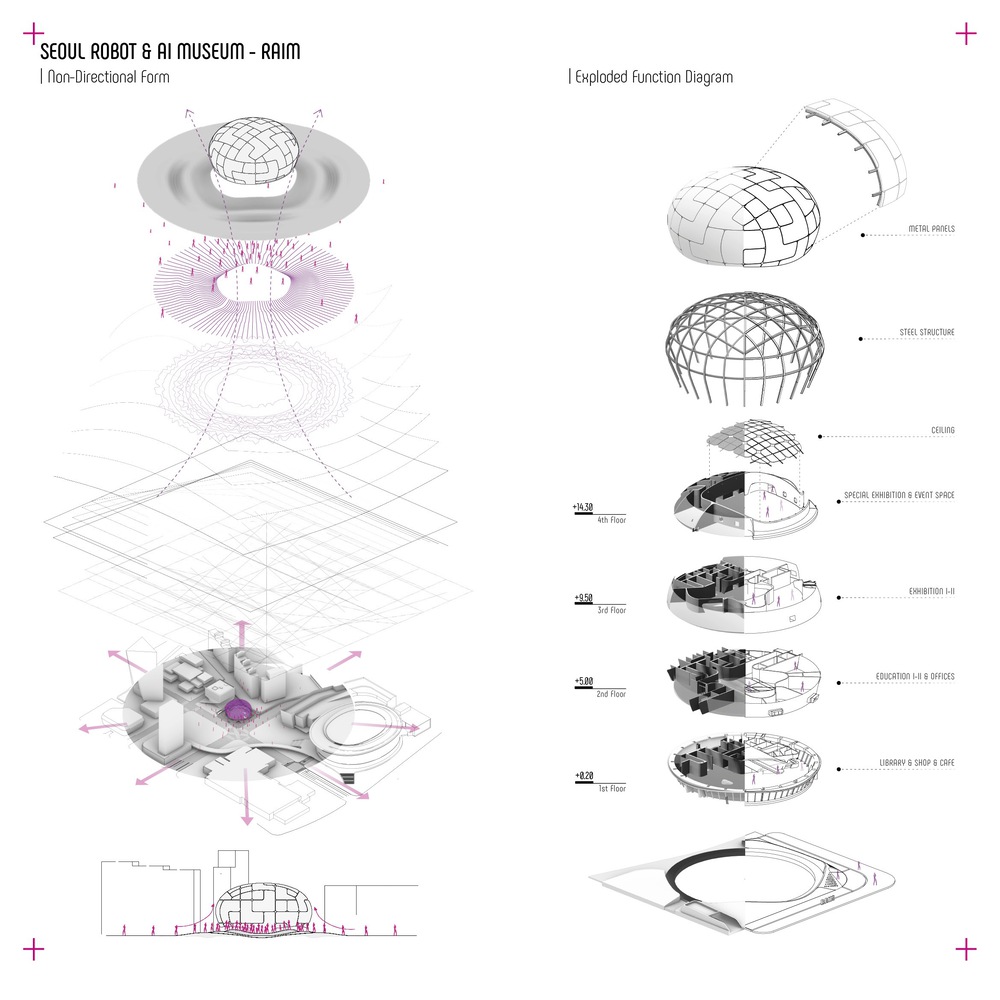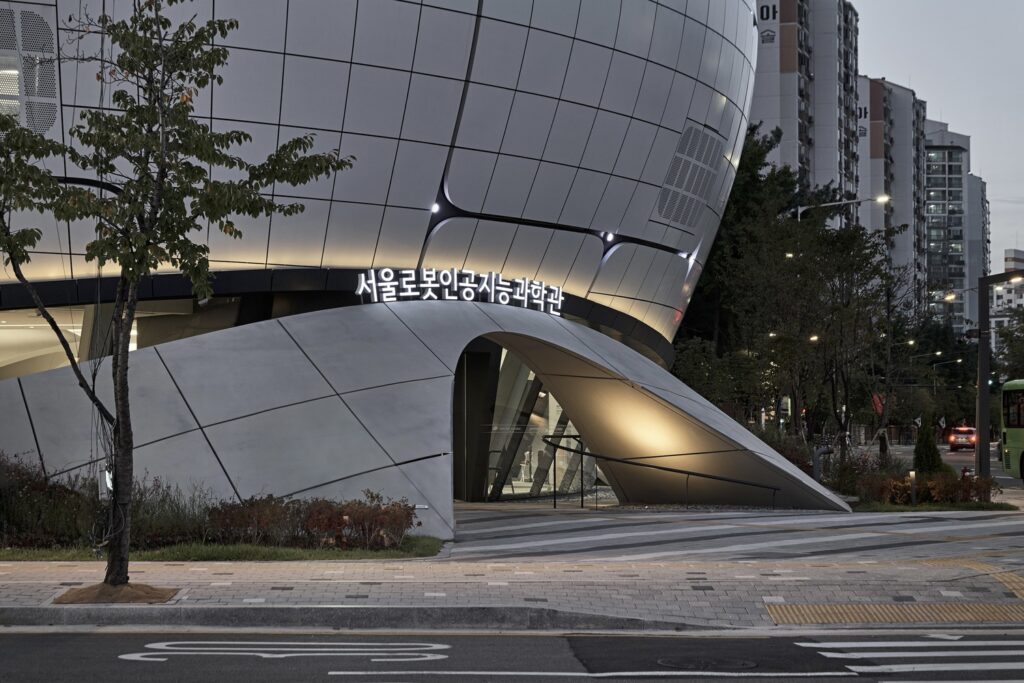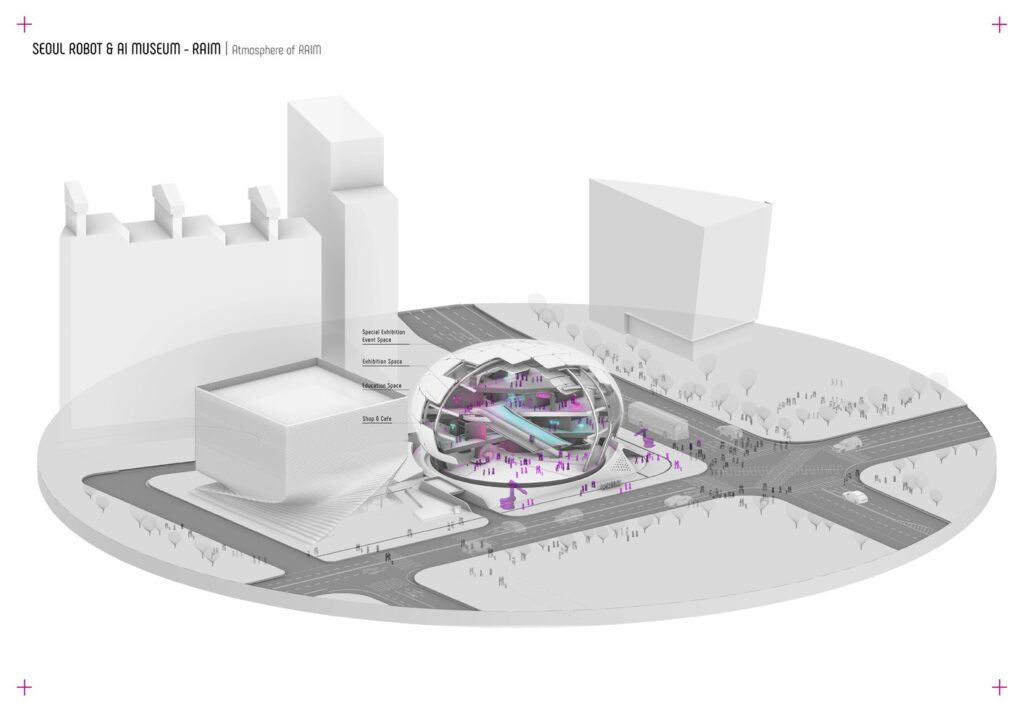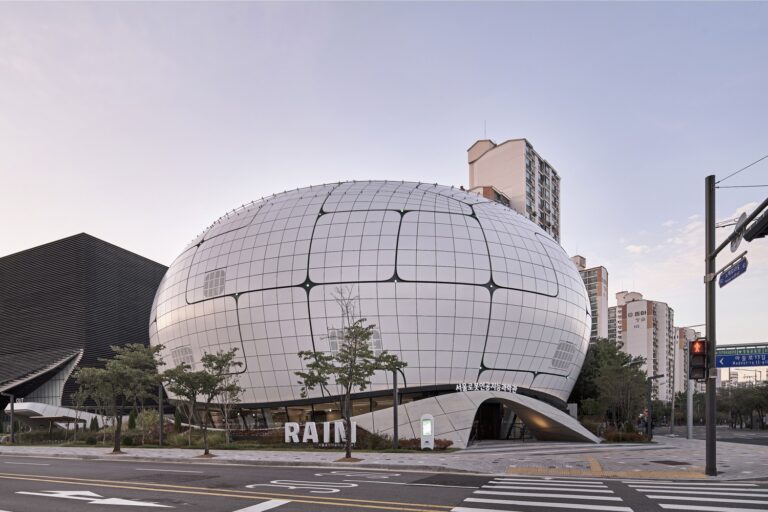The Seoul Robot & AI Museum (RAIM) has officially opened in northeastern Seoul, marking a transformative moment in architectural and technological innovation. Designed by MAA—Melike Altınışık Architects—the museum is the world’s first cultural landmark dedicated to robotics and artificial intelligence, reflecting South Korea’s leadership in the 4th Industrial Revolution.
RAIM’s spherical, fluid form embodies the dynamism and adaptability of the technologies it houses. The non-linear design, created using advanced digital fabrication and reverse engineering techniques, merges seamlessly with the museum’s narrative. The structure itself is a “living exhibition,” integrating smart technologies from construction to operation, exemplifying the museum’s commitment to innovation.
Visitors are greeted by robots at the entrance, setting the stage for an immersive journey through RAIM’s groundbreaking exhibits. The museum features a vertical exhibition tunnel, permanent and temporary galleries, educational spaces, and interactive programs. This design fosters exploration and invites visitors to engage with cutting-edge advancements in robotics and AI.
RAIM also serves as a catalyst for innovation, connecting academic institutions, industries, and the public. Collaborative initiatives with nearby cultural and entrepreneurial hubs, like the Seoul Museum of Photography and Chang-dong Aurene, position the museum as a cornerstone of Seoul’s technological and cultural renaissance.
Constructed using smart building techniques, such as Building Information Modeling (BIM) and Off-Site Construction (OSC), RAIM’s design achieves unparalleled precision. From its CNC-machined façade to the aerospace-inspired vertical tunnel, every element reflects the integration of advanced construction methods and creative vision.
RAIM stands as a beacon of progress, uniting architecture, technology, and culture in one dynamic space. As a symbol of the future, it challenges visitors to rethink the boundaries of innovation while contributing to the ongoing evolution of smart technologies and their role in everyday life.





